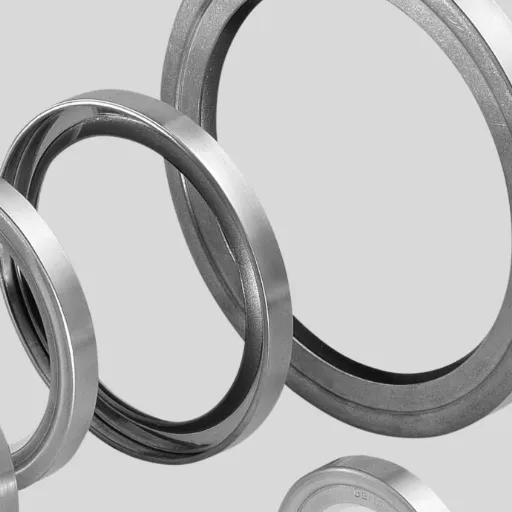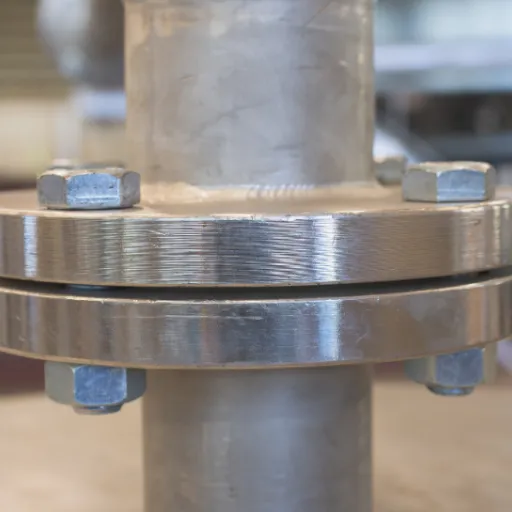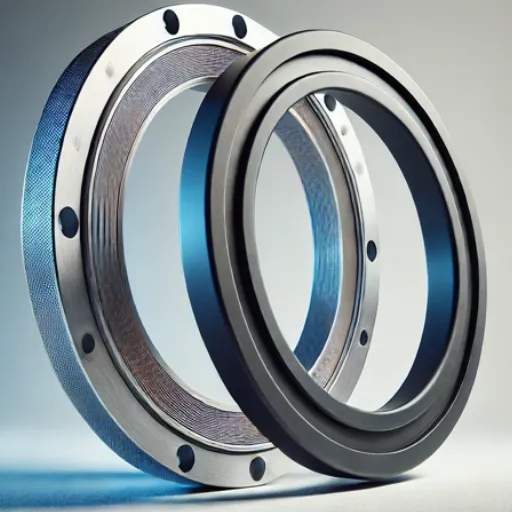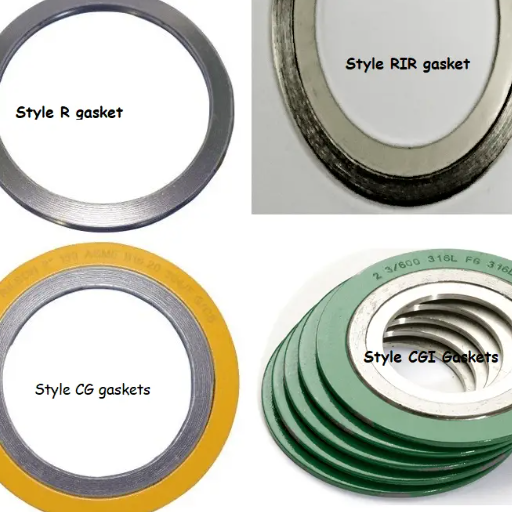The right flange for a particular pump flange makes a very critical decision since it embraces the efficiency, reliability, and general performance of the system. A keen user may get overwhelmed simply with the number of flange types, sizes, and materials. This is why it is very important to understand the major variables considered in flange selection. This guide, therefore, helps you navigate through the information needed to make an informed decision, avoiding wrong choices that end up costing you again and ensuring maximum serviceability in your pump. Some technicalities will also be discussed, including compatibility, pressure rating, and professional standards, which will act as a backbone to your confidence in choosing flanges of your own.
Understanding Flange Sizes

The flange size is selected based, mainly, upon the pipe’s dimensions and pressure requirements. The most essential measurements are the outside diameter (OD), bolt circle diameter (BCD), and the number and diameter of bolt holes. This, in turn, ensures that the flange will fit with the pipe system and will provide a tight connection.
Flange sizes have been standardized according to prevalent industry standards like ANSI/ASME B16.5 in the case of pipes with diameters from ½ inches to 24 inches. Selection of the right size tends to get influenced greatly by the NPS and the schedule of your pipe, which directly affects the internal diameter and wall thickness of the pipe. Always ensure that you verify these dimensions before you make any choice so that proper fitting and performance go hand in hand.
What is a Flange?
Flanges are important elements that allow the piping system to be connected to pipes, valves, pumps, or other equipment for easy assembly/disassembly or maintenance of all kinds. They mostly form a rim or collar-like structure against the parts to be coupled so that both are strongly coupled and aligned with each other. They are manufactured per numerous types, such as slip-on, weld neck, threaded, and blind flanges, each of which is intended for various purposes and pressure kinetics. Modern flanges mostly conform to some established standards, like ASME B16.5 or ISO, to ensure compatibility and safety in various industrial applications. Beyond their basic functions, the system can be extended or modified by using them with very little disruption, which makes flanges very important for proper handling of piping systems.
Importance of Flange Size
The size of a flange plays a key role in piping system performance and safety and in efficiency aspects. The right flange size ensures proper alignment and seating so that no leakage occurs and pressure is maintained on the inside. A flange of wrong size can cause operational failure, heavy maintenance costs, and possible hazards. Recent search trends show that many professionals are requesting guidance for proper sizing to enable industrial optimization. Industry standards like ASME B16.5 give detailed specifications about flange dimensions depending on pipe size, pressure class, and material types so that the right flange is chosen for any application. Moreover, for long-term serviceability and performance, it is necessary to consider environmental conditions and load factors affecting the system.
Different Flange Sizes Available
A plethora of flange types exist to fit across any range of industrial applications with respect to pipe dimensions and system requirements. According to contemporary information, standard flange sizes often range from ½” to 24″ in nominal pipe size (NPS) for the majority of normal industrial applications. Beyond this, for specialized applications such as those seen in oil refineries or large-scale water treatment engineering, larger flange sizes of the order of 60 inches and above become available.
Flange size depends heavily on the pressure class, which is considered into classes like 150, 300, 600, and so on, designating the capability of the flange to endure pressure within a certain system. Each class is associated with specific measurements for the outside diameter (OD), bolt circle diameter, and number of bolt holes. Standards in the industry inform about these dimensions and measurements so that manufacturers and users across different applications can work harmoniously example of such standards are ASME B16.5 for smaller sizes and ASME B16.47 for larger sizes.
Choosing the right size of flanges is set for functionality toward utility, efficiency, and safety therewith. Standards are referred to along with system specifications and pressure for the user to have the right size of flange for the environment in which he has to work.
Choosing the Right Flange

Makes the right flange selection based on the particular requirements of your system, including the nature of the fluid or gas transported, operating pressure, and temperature. The next step is to ensure that the flange matches piping dimensions, with flange size commensurate with the diameter and specifications of the pipe. Placing empowerment reliance upon recognized standards such as ASME B16.5 or ASME B16.47. Another factor to remember is selecting a material capable of standing environmental conditions, like corrosion or high temperatures. Following the above-announced steps will ensure you combine a flange that is secure, efficient, and suitable for your system’s needs.
How to Measure Flange Size
Depending on the situation, the two-faced should always be measured with a radius and a thickness of at most 6 inches. Next, measure the outside diameter of the flange. This is, in fact, the diameter measured from inside to inside of the two faces of a flange. The bolt circle diameter (BCD) is then to be measured. Also called the pitch circle diameter (PCD), it is an imaginary circle that passes through the center of the bolt holes. This measurement must be taken seriously when matching the flange with its mating parts.
Finally, count the number of bolts and measure their diameter. Correctly identifying the bolts and their diameters will assure correct alignment and fastening of the flange. Also, measure the inside diameter to match it with the pipe size. One should also check the thickness of the flange and the height of the hub, if any, since these are factors determining pressure ratings and compatibility.
Verify the name and standard of the flange (i.e., ASME, ANSI, DIN) as this determines its pressure class and generic design. The modern-day gadgets and gizmos that include digital calipers or 3D scanning tools can sometimes be used to optimize these measurements for complete precision. Delivering the flange with up-to-date data relying on references such as ASME standards, along with other online guides and tools, will ensure that you get measurements that are truly precise and reliable so that your flange fits right into the system without any hiccup.
Finding the Right Flange Fit
Selecting the correct flange fit for your system can be a very tricky job. Precision and efficiency can be ensured by marrying up-to-date existing technical standards with the newest searching tools. Before carrying on, make sure you have at hand the latest specifications for flange types, materials, and pressure classes from valid sources like the ASME standards. understandably insightful industry information, or reputed manufacturer catalogs detailing dimensions and compatibility charts. Filter the results by publish date to ensure the recency of the information, especially keeping an eye out for relevant data that may be outdated. Lastly, such as image or patent search, come in handy to cross-check those obscure designs of flange, creating a well-rounded base that assists in choosing the right flange for complicated or unique system requirements. This smooth integration of traditional engineering practices with modern, data-centric tools gives more than satisfactory results.
Common Mistakes in Flange Selection
|
Key Point |
Description |
|---|---|
|
Material |
Match to environment |
|
Size |
Ensure proper fit |
|
Pressure |
Check rating compatibility |
|
Gasket |
Use correct type/size |
|
Bolts |
Tighten evenly |
|
Alignment |
Ensure proper positioning |
|
Lubrication |
Apply as recommended |
|
Welding |
Ensure quality welds |
|
Inspection |
Regular checks for wear |
|
Thermal |
Account for expansion |
Flange Size Change and Adjustments

Whatever the task that involves changing or adjusting flange sizes, it is extraordinarily important to verify the exact specifications of the new flange, such as its diameter, bolt pattern, and pressure rating. The standards applicable to the flange, bearing ASME B16.5 for instance, should be referenced at first to find a compatible flange. Measuring dimensions should be carried out with the appropriate tools and methods before actually proceeding to the adjustment. In case of a mismatch in flange size, reducing flanges or adapters should be considered to compensate for the difference. Compatibility of materials and pressure suitability must always be verified to maintain the integrity of the system and safety.
When to Change Your Flange Size
Changing out of flange size becomes necessary when a mismatch occurs between the flange and the interfacing components such as pipes or valves, involving diameters or pressure classes, or even standards. It is even better if a change is considered while enhancing system capacity, or in the other case when there could be an old one, a damaged one, or improper for the new set of operational changes. However, before the change is made, it should be ensured that the selected flange meets the required dimensions, pressure rating, and material compatibility for that application. Thus, proper sizing should ensure system efficiency, safety, and compliance to industry standards.
Signs of a Wrong Flange Fit
Making a mismatch of flange an ideal topic for fitting checks ensures system integrity and averts problems. Some key indicators include visible gaps or misalignments on the flanges that may cause improper sealing performance. Another common sign of a flange error is face damage, including visible warping or scratches, well-documented in cases of wrong pairings or over-tightening during assembly. Intermittent leakages or pressure fluctuations within the system may also indicate mismatched flanges. Furthermore, excessive vibrations or strange sounds during operation could suggest that the flange is misaligned or inappropriate for the application at hand.
Drawing from the insights of best practices and common queries, it can be established that to have a flange fit, one needs to give attention to some particular specifications such as diameter, pressure rating, and compatibility with relating materials. Always confirm that the flange complies with applicable standards (e.g., ASME, ANSI, or DIN) as per the working environment. Proper maintenance and solving of any improper fit even at the slightest indication, have a low chance of leading to expensive repair or system failures.
Using the Right Flange for Optimal Pumping

Good pumping has to start with the right flange. Concentrate on the three main parameters:
Material Compatibility – Select the flange material that suits the fluid of the system and operating conditions so that a corrosive attack or degradation does not take place. Common materials include stainless steel for ultimate protection and PVC for a cheap chemical resistance.
Proper Sizing – Check that the size of the flange is according to the diameter of the pipe and capacity of the system so as to have smooth passage and no drop in pressure.
Pressure and Temperature Ratings – Ensure that the flange is rated for the pressure and temperature to be encountered. This will allow for safety and efficient working condition under operating conditions.
Benefits of the Correct Flange Size
Choosing the correct flange size is essential to making sure piping systems perform optimally and maintain a long life. The right flange size will almost never leak and will cause hardly any pressure drops, ensuring flow in all operational circumstances for both fluids and gases. This, in turn, lowers the operational cost due to less energy loss. Improper flange selection has been one of the historically considered causes of inefficiencies in systems and their failures, thereby underscoring the criticality of precision in selection. Size selection also ensures safety; undue physical stresses that could result in catastrophic pipe failures being rejected due to size-related parameter consideration, more so when pressure or temperature is involved. System reliability is also heavily promoted through the utilization of flanges according to accepted standardized industry specifications from a regulatory standpoint.
Flange Fit and Pumping Efficiency
The critical aspect concerning flange fit affecting pumping efficiency in industries is ensuring that they are aligned and fitted; leaks are reduced, pressure levels inside the system are maintained, and losses of energy during operation are avoided. Some research indicators point toward inefficiency caused by poor flange fitting, with energy losses reaching up to 10% from leakage and pressure drop within certain industrial systems.
Proper flange fit will also improve flow characteristics, which are most important in ensuring that the pumping systems can deliver output quantities at pressure, depending on the application under consideration, such as oil, gas, and chemical processing. From recent industry data, systems with standard flanges manufactured to ASME or ISO standards have increased operational efficiencies by 15-20% compared to systems using flanges of sub-standard or non-standardized kinds.
Furthermore, flange fit affects the lifetime of both the flange and the connected parts. In fact, a faulty flange can stress joints in airline manners, material fatigue, premature wear, so much so that the system would be shut down. When these types of advanced technologies, such as 3D scanning and precision engineering, are employed, it will assure that the alignment of the flange is within 0.1 mm of the specified tolerance to ensure the highest system reliability while reducing system maintenance costs.
Investing in good flange components and making sure those components are properly installed helps to improve pump efficiency and cut down on energy consumption, which aids in greener practices by reducing the overall carbon footprint of the system.
Resources for Finding Flange Sizes
If we talk about flange sizes, first of all, industry standards like ASME and ANSI have charts and specifications giving full details of flange dimensions. Manufacturer catalogs are a major area of source information for sizing specifics and compatibility charts. Another quick method of checking sizes is using calculators and online tools available on engineering-related trusted platforms. Upon further queries, I would contact the supplier or an engineering professional who could better advise the application requirements.
Reference Sources
- Selection guide for Masterflex® I/P® pump heads
Link to PDF
This guide provides detailed information on pump head selection, including flange considerations. - Basic Practices in Compressors Selection – Purdue e-Pubs
Link to Document
This document discusses best practices in selecting compressors and related components, including flanges. - Section 11100 Pumps and Motors – Idaho Falls
Link to Document - Top Threaded (Screwed) Flange Suppliers in China
What factors should I consider when choosing a flange?
When selecting the appropriate flange, you need to evaluate several important factors. These include the pressure and temperature ratings of your system, the size and type of piping used, the fluid being transported, and the type of connection required (e.g., weld neck, slip-on, or threaded). Environmental conditions, industry standards, and material compatibility also play a critical role. Ensuring these elements align will help you select a flange that is safe, durable, and efficient for your application.
What are the different types of flanges and their uses?
There are several common types of flanges used in piping systems. Weld neck flanges are ideal for high-pressure and high-temperature environments. Slip-on flanges are easier to install and suitable for lower pressure systems. Blind flanges are used to seal the ends of piping systems, while socket weld and threaded flanges are used for small-diameter pipes or in situations where welding is not practical. Each type serves a specific function depending on system demands and installation preferences.
How do I determine the correct flange size and pressure rating?
Flange size and pressure rating are determined by the specifications of your piping system. You’ll need to know the nominal pipe size (NPS) and the pressure class required, which can range from Class 150 to Class 2500 depending on the system’s operating pressure and temperature. Industry standards such as ASME B16.5 provide detailed sizing charts to match flange dimensions with pipe size and pressure rating.
Why is flange material important, and how do I choose the right one?
Flange material is crucial because it must withstand the mechanical, chemical, and thermal conditions of your system. Common materials include carbon steel, stainless steel, alloy steel, and PVC. For corrosive environments or food-grade applications, stainless steel is often preferred. In contrast, carbon steel works well in general industrial applications. Always choose a material compatible with the fluid, pressure, and temperature of your system to ensure long-term reliability.
Can different flange standards be mixed in a piping system?
It is not recommended to mix flanges of different standards, such as ASME with DIN, because the dimensions, pressure ratings, and bolt patterns may not match. Doing so can result in poor sealing, mechanical stress, or system failure. Always ensure that all flanges and mating components conform to the same standard throughout your piping network for safety, efficiency, and regulatory compliance.






